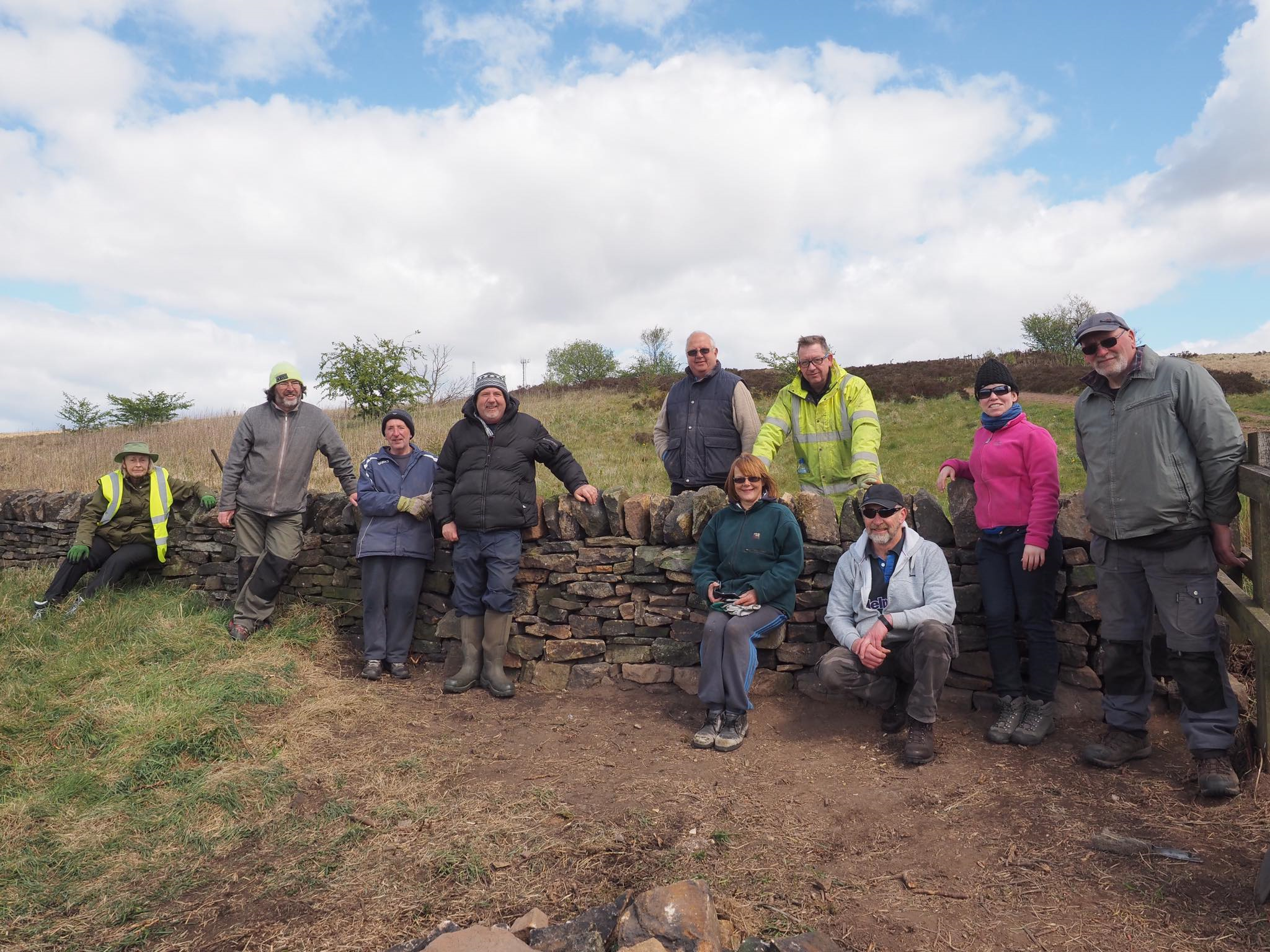Moors for the Future Partnership has been working with the community group, Friends of Crompton Moor, for the last couple of years to carry out sphagnum moss planting and vegetation monitoring. The first of its kind for the Partnership, this collaboration aims to give the community a sense of ownership of Crompton Moor through practical conservation.
Moors for the Future Partnership first came into contact with Friends of Crompton Moor through the Partnership’s Community Science Project which established an environmental monitoring site on the moor in 2017.
The Partnership has worked with Friends of Crompton Moor to organise sphagnum planting days, where volunteers have come along to plant nearly 10,000 plugs of this crucial bog-building plant. The Partnership has also advised the group on carrying out the long-term monitoring of these sphagnum moss plug plants to look at how they grow and interact with the environment around them. The group will be monitoring 90 quadrats across the moor. The majority of the funding for the project has been secured by City of Trees, and has been granted by the Environment Agency.
This collaboration between the Partnership and Friends of Crompton Moor is a first for the Partnership and provides a blueprint for how community initiatives can become involved in practical conservation on their doorstep. By encouraging community involvement in moorland restoration, it may help to reduce incidences of wildfire, littering and misuse of the moorland as communities develop a sense of pride in these unique landscapes. Friends of Crompton Moor are also supported by, and work in collaboration with, other organisations including City of Trees, Oldham Council and Greater Manchester Ecology Unit.
Crompton Moor, spanning 76 hectares, and reaching an elevation of 391m, is one of the largest open spaces owned by Oldham Council in Greater Manchester, and is a grade A Site of Biological Importance since 2003. Its close proximity to Oldham and other areas of Greater Manchester, makes it an important place for the residents of these areas as it may often be their first experience of a moorland landscape.
Crompton Moor was originally a simple heather and acid grass moorland initially used for farming, until the industrial revolution, when it was ravaged by mining and quarrying. The area has long been subjected to pressures from water catchment, quarrying, coal-mining, and general urban encroachment.
In 2010, Friends of Crompton Moor, a wildlife conservation group, was formed with the support of the Oldham Countryside Service. Over the years a strong group of committed members has repaired the infrastructure such as fencing, drystone walls and horse stiles, and with the support of Moors for the Future Partnership, City of Trees, Oldham Council and the Greater Manchester Ecology Unit, the members have been able to not only protect the wildlife, but also enhance it.
Along with the sphagnum planting and moorland vegetation monitoring, the group is restoring the heathland lower down the moor by controlling the trees and scrub, creating wetlands, planting trees in the right places, installing nestboxes, and removing invasive vegetation that negatively impact on the native species. Recording of all the wildlife is done on a regular basis and sent to national databases.
The group’s future plans include developing Crompton Moor as an environment suitable for local schools, colleges, and universities to use as a facility for biodiversity and conservation education. In collaboration with City of Trees, Friends of Crompton Moor will also soon be starting to plant new native broadleaf woodland as part of the Northern Forest initiative. The trees will not be planted on the peatland part of the moor, but instead will fringe it to create a healthy and diverse environment that supports a rich array of plant and animals.

Marian Herod, from Friends of Crompton Moor says “We are extremely grateful to Moors for the Future for all the help they have given us over the past few years. Learning about sphagnum moss and scientific monitoring seemed quite a daunting prospect at first, but with their guidance and teaching we now have a clear understanding of the importance of this work and feel completely confident that we can continue the work over the years ahead. It has been such a pleasure working with them, and we hope this friendship continues for years to come.”
Gareth Roberts, from Moors for the Future Partnership says “It has been truly inspiring working with this group. They are so passionate about their work and they are so dedicated to protecting Crompton Moor for future generations to enjoy. They love the nature on their doorsteps and they know that if they look after it, it will look after them in return”.
Pete Stringer, from City of Trees added “City of Trees is really pleased to be involved in the partnership working with Moors for the Future Partnership, Friends of Crompton Moor and Oldham Council. Collectively we are helping to restore essential parts of this beautiful moorland that will provide significant benefits in terms of helping to reduce flooding downstream, creating a key habitat for wildlife, and providing an opportunity for the people of Oldham to experience a local moorland environment.”
Friends of Crompton Moor are always on the lookout for new volunteers to help carry out their busy schedule of activities. To find out more about volunteering, visit their Facebook page.